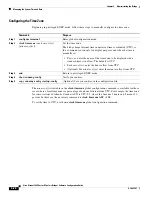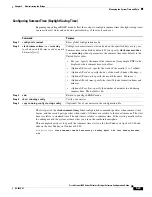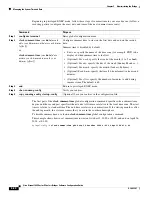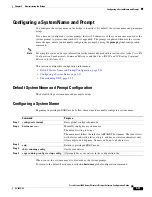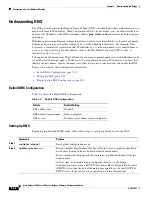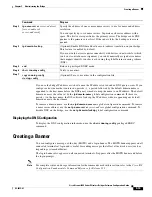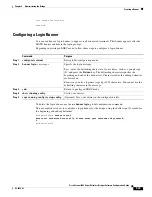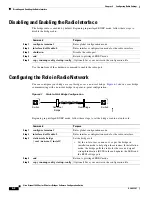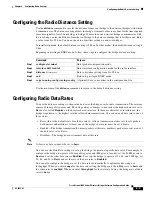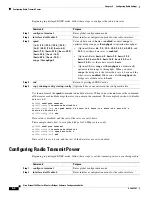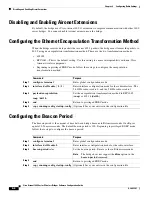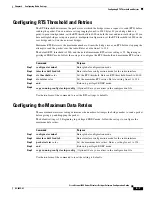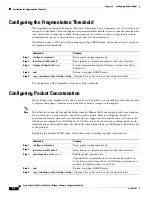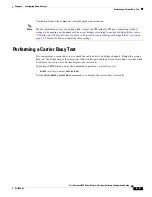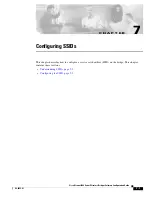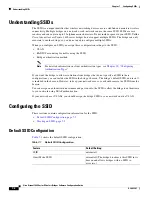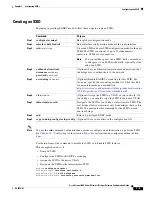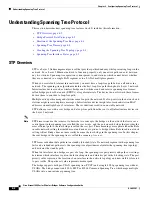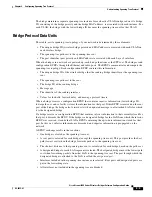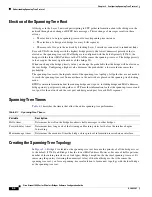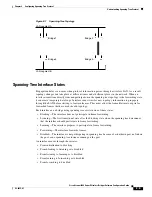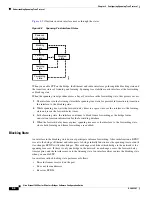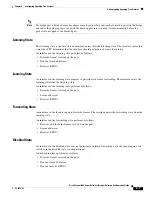
6-6
Cisco Aironet 1400 Series Wireless Bridges Software Configuration Guide
OL-4059-01
Chapter 6 Configuring Radio Settings
Disabling and Enabling Aironet Extensions
Disabling and Enabling Aironet Extensions
By default, the bridge uses Cisco Aironet 802.11 extensions to improve communication with other 1400
series bridges. You cannot disable Aironet extensions on the bridge.
Configuring the Ethernet Encapsulation Transformation Method
When the bridge receives data packets that are not 802.3 packets, the bridge must format the packets to
802.3 using an encapsulation transformation method. These are the two transformation methods:
•
802.1H
•
RFC1042—This is the default setting. Use this setting to ensure interoperability with non-Cisco
Aironet wireless equipment.
•
Beginning in privileged EXEC mode, follow these steps to configure the encapsulation
transformation method:
Configuring the Beacon Period
The beacon period is the amount of time between bridge beacons in Kilomicroseconds. One Kµsec
equals 1,024 microseconds. The default beacon period is 100. Beginning in privileged EXEC mode,
follow these steps to configure the beacon period:
Command
Purpose
Step 1
configure terminal
Enter global configuration mode.
Step 2
interface dot11radio
{
0
|
1
}
Enter interface configuration mode for the radio interface. The
2.4-GHz radio is radio 0, and the 5-GHz radio is radio 1.
Step 3
payload-encapsulation
snap
|
dot1h
Set the encapsulation transformation method to RFC1042
(
snap
) or 802.1h (
dot1h
).
Step 4
end
Return to privileged EXEC mode.
Step 5
copy running-config startup-config
(Optional) Save your entries in the configuration file.
Command
Purpose
Step 1
configure terminal
Enter global configuration mode.
Step 2
interface dot11radio 0
Enter interface configuration mode for the radio interface.
Step 3
beacon period
value
Set the beacon period. Enter a value in Kilomicroseconds.
Note
The bridge does not support the
dtim
option in the
beacon period
command.
Step 4
end
Return to privileged EXEC mode.
Step 5
copy running-config startup-config
(Optional) Save your entries in the configuration file.

